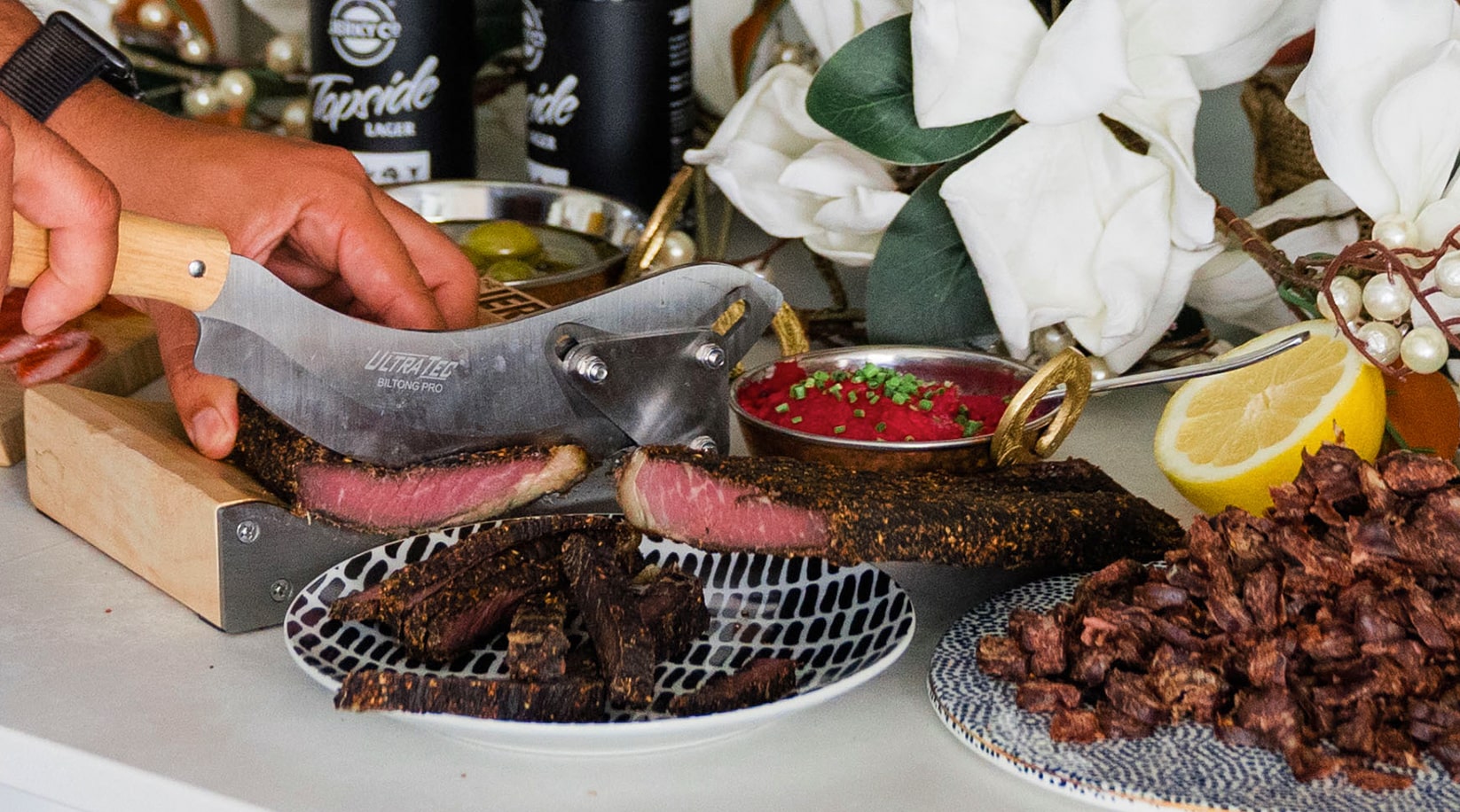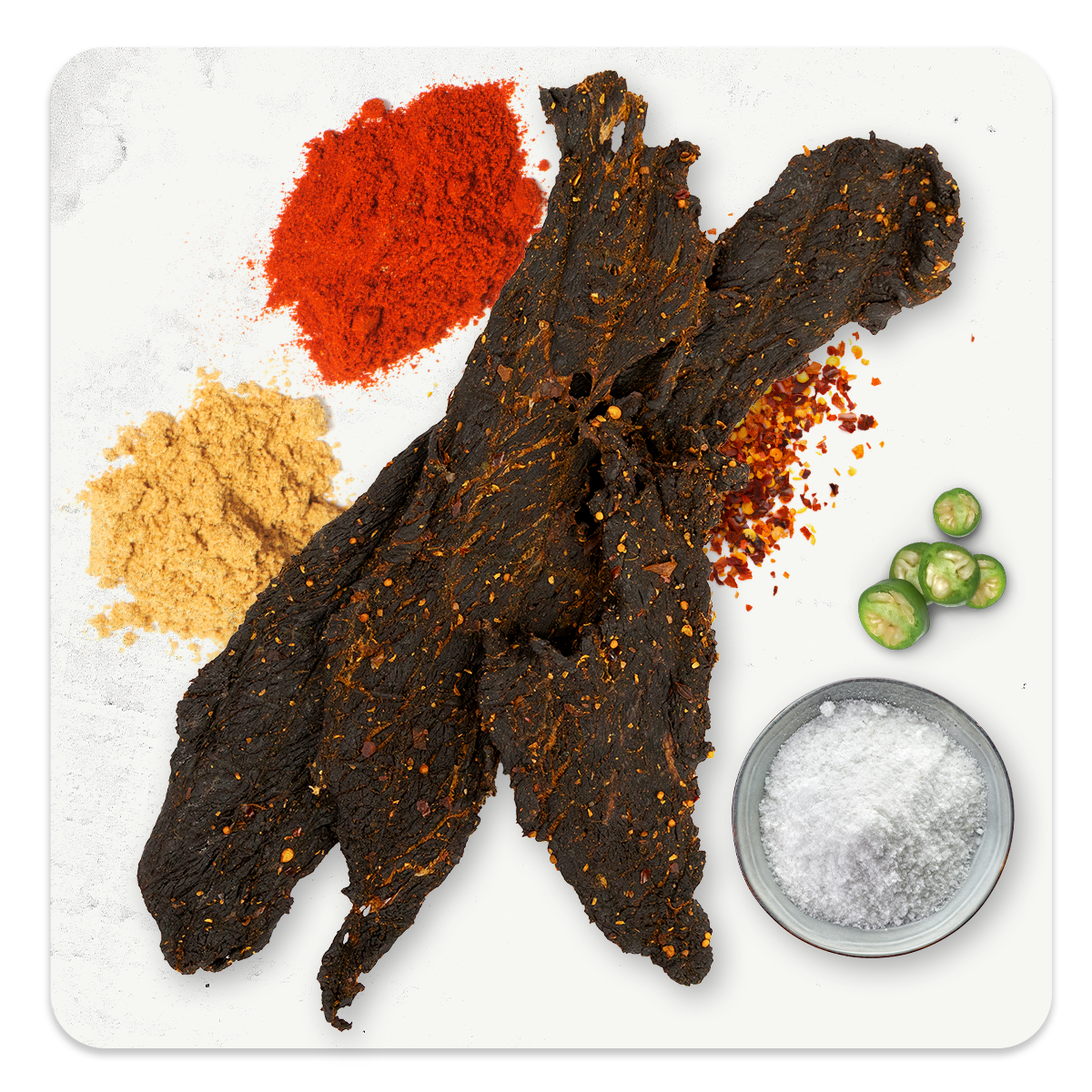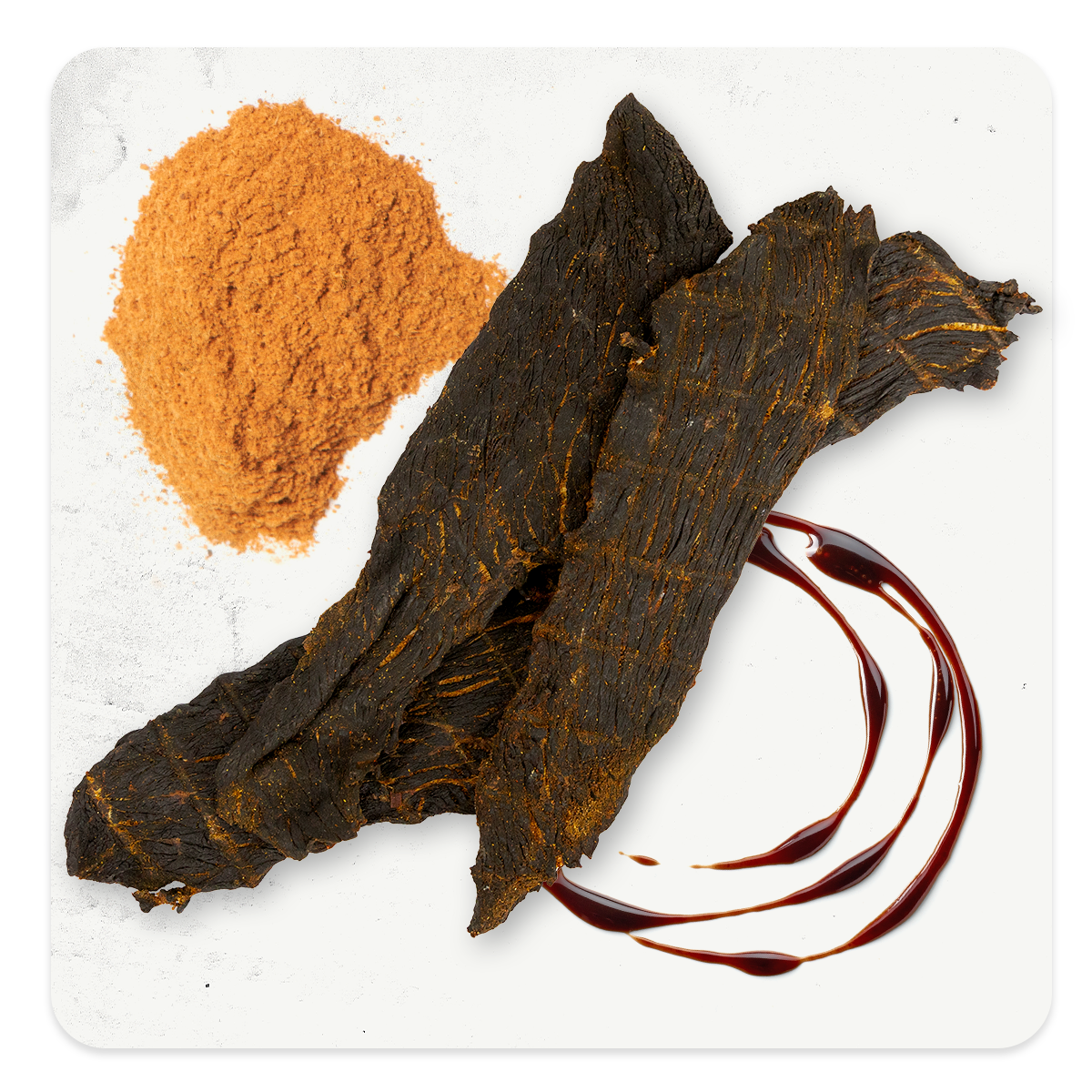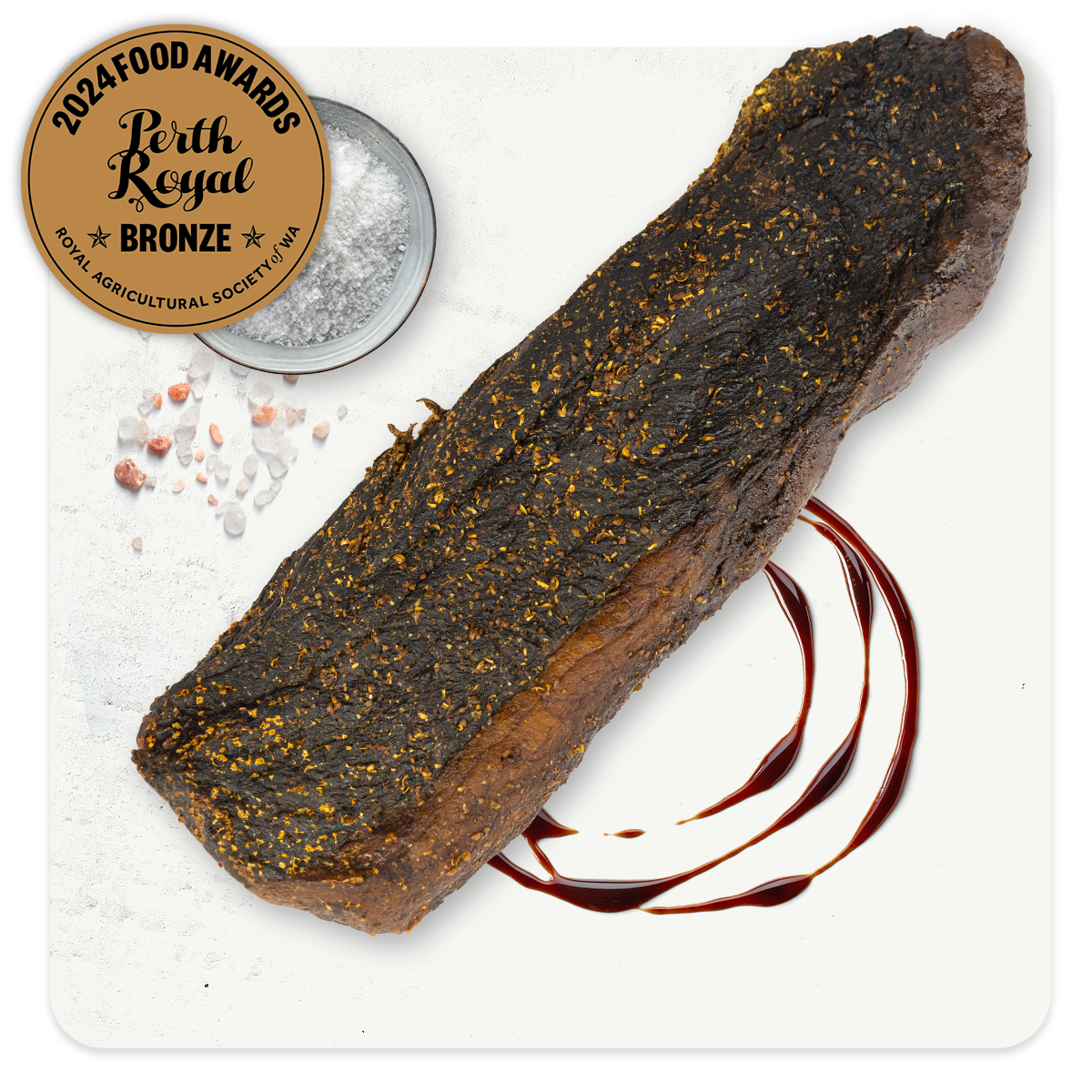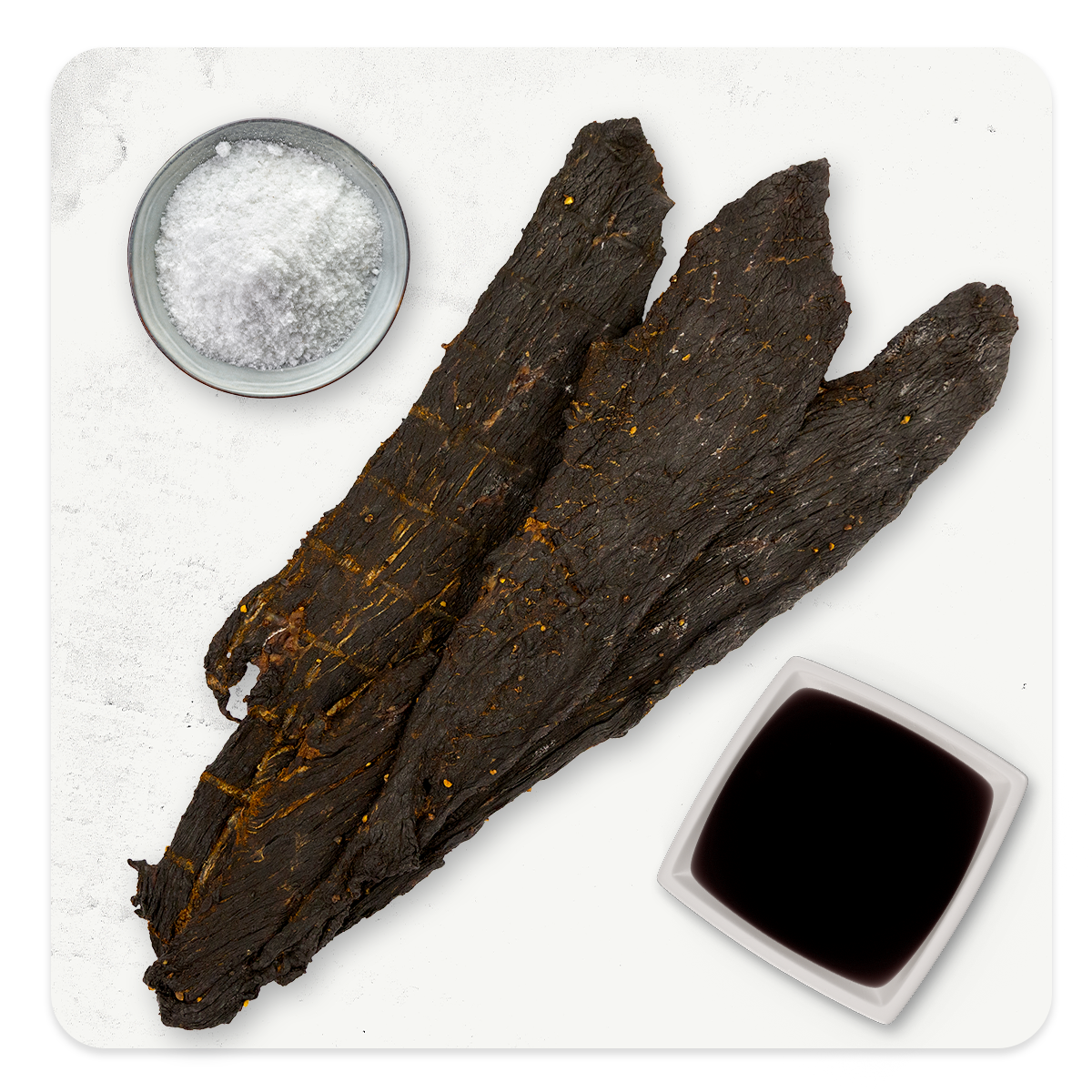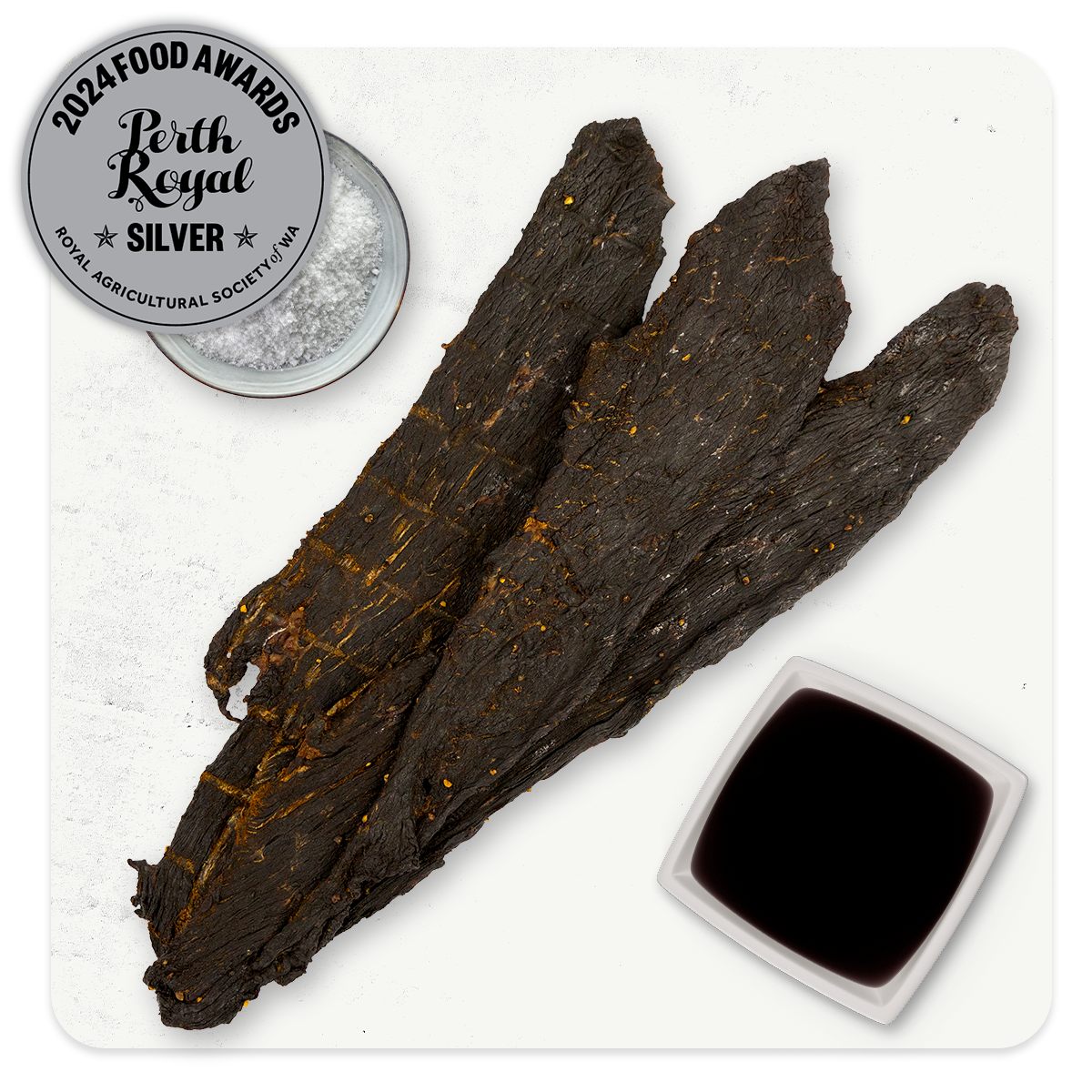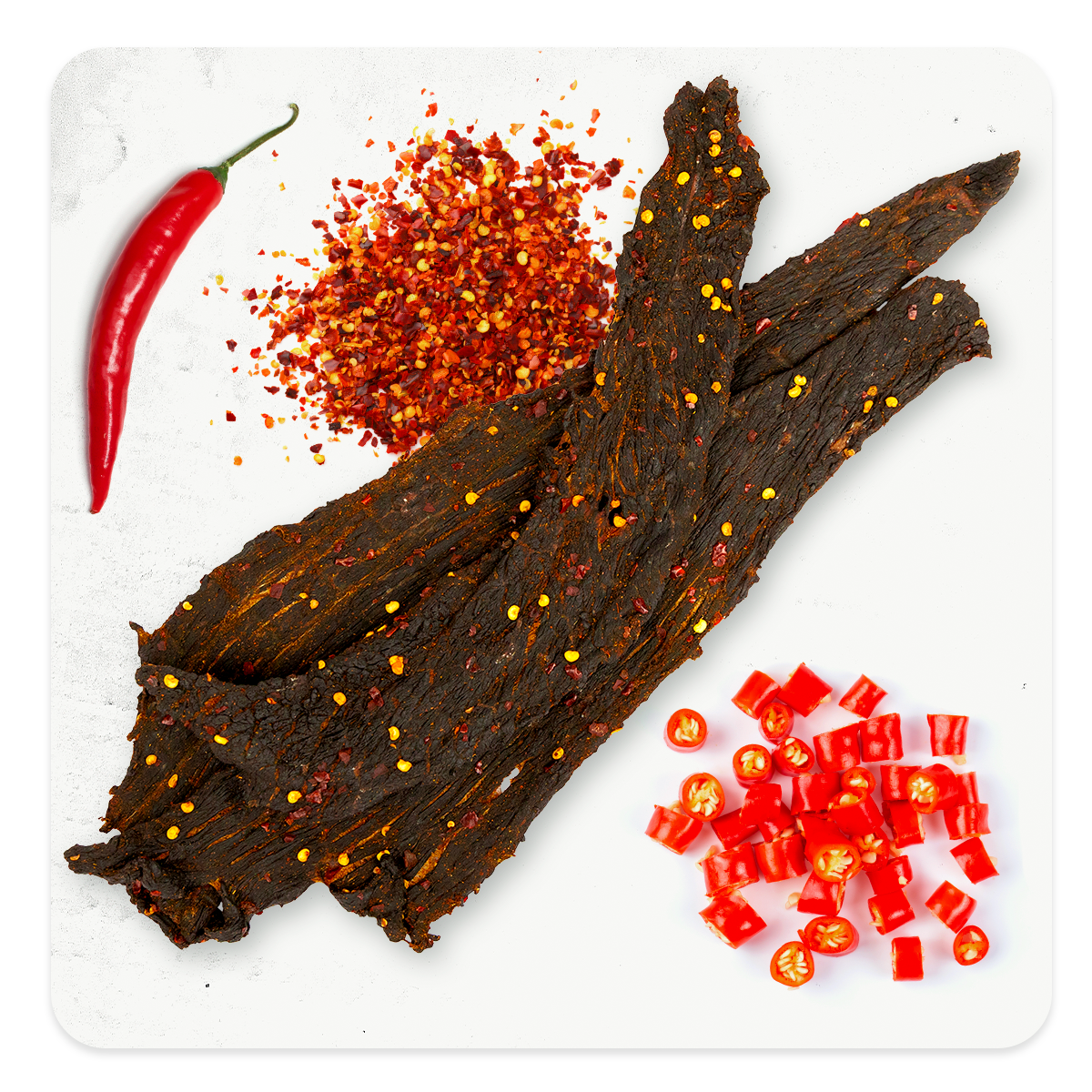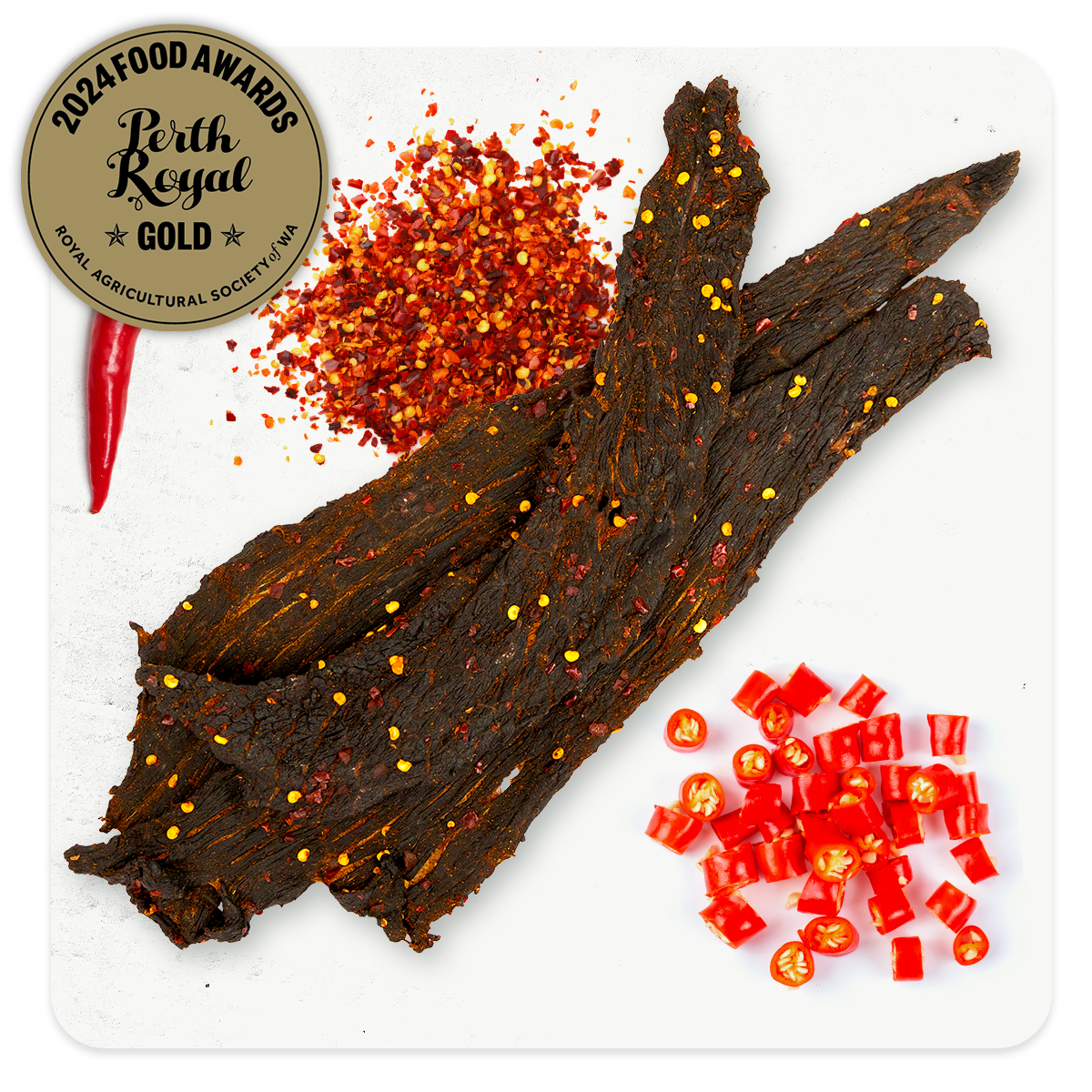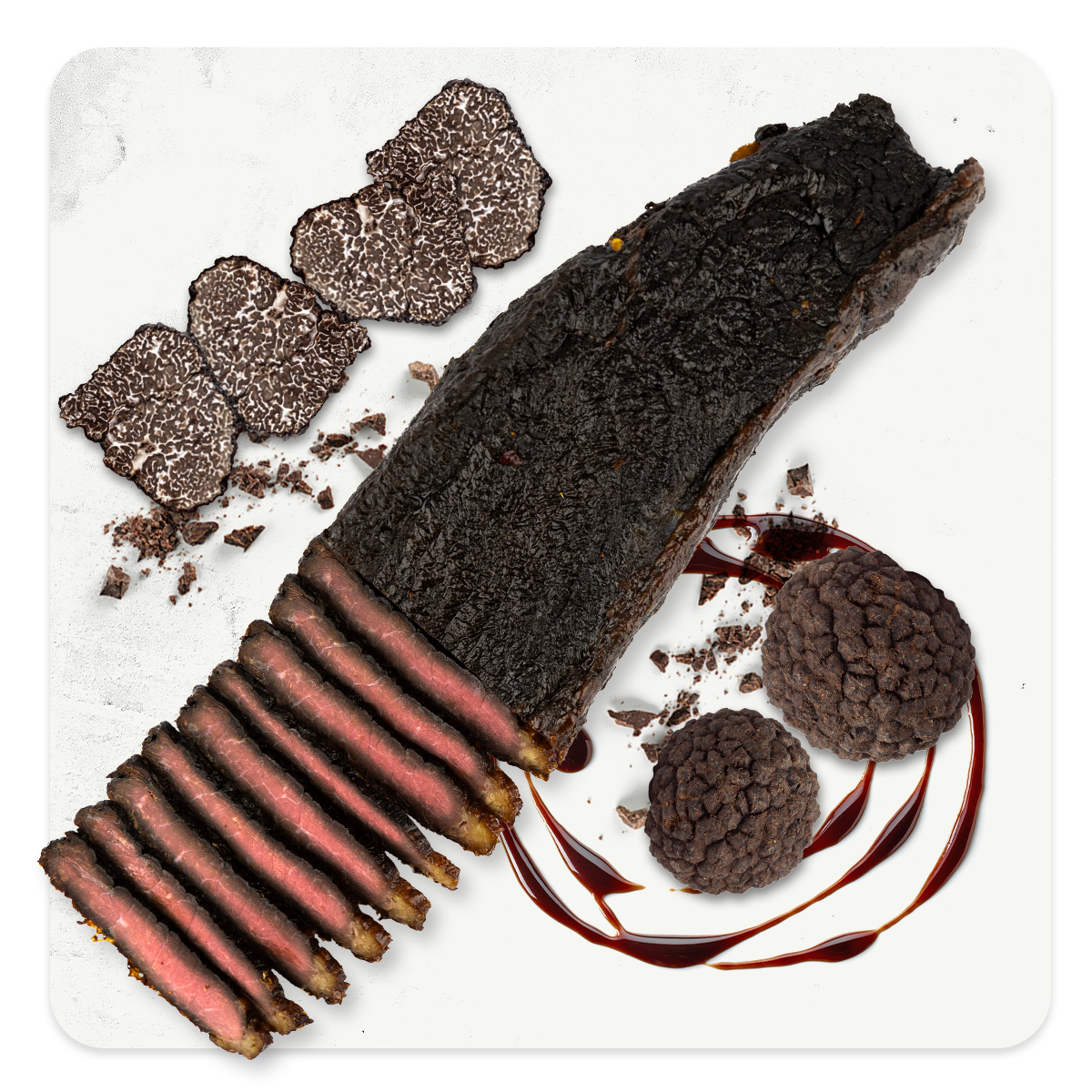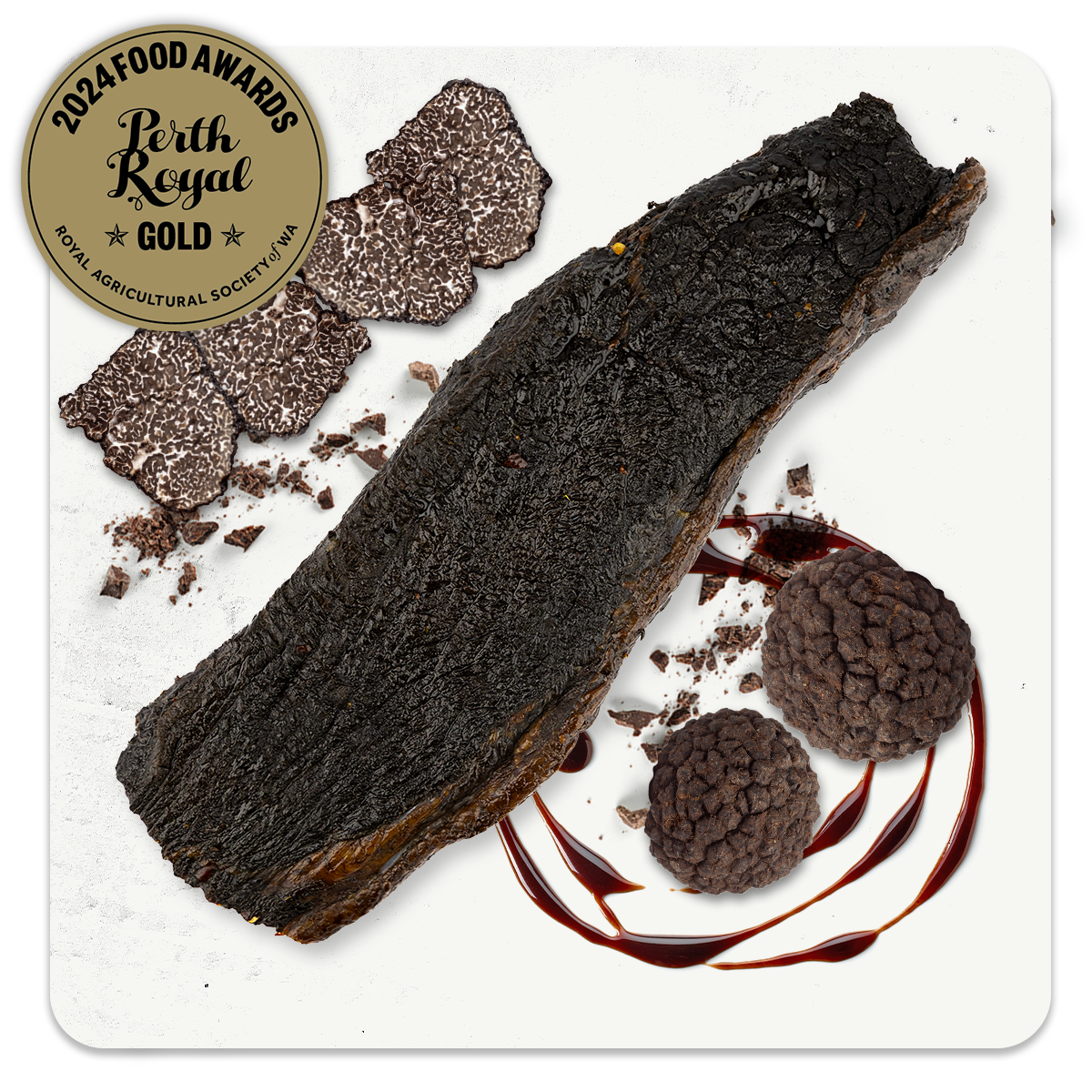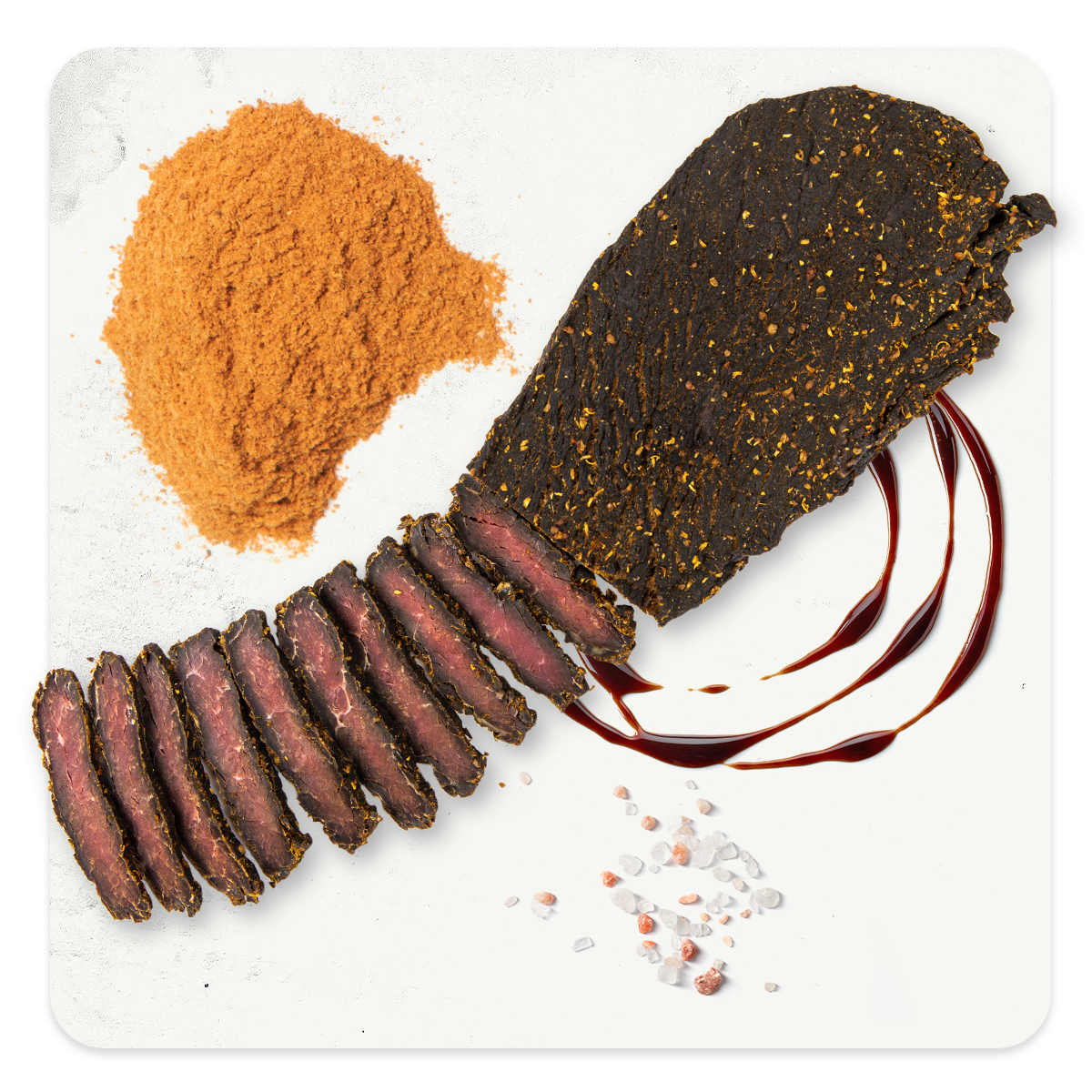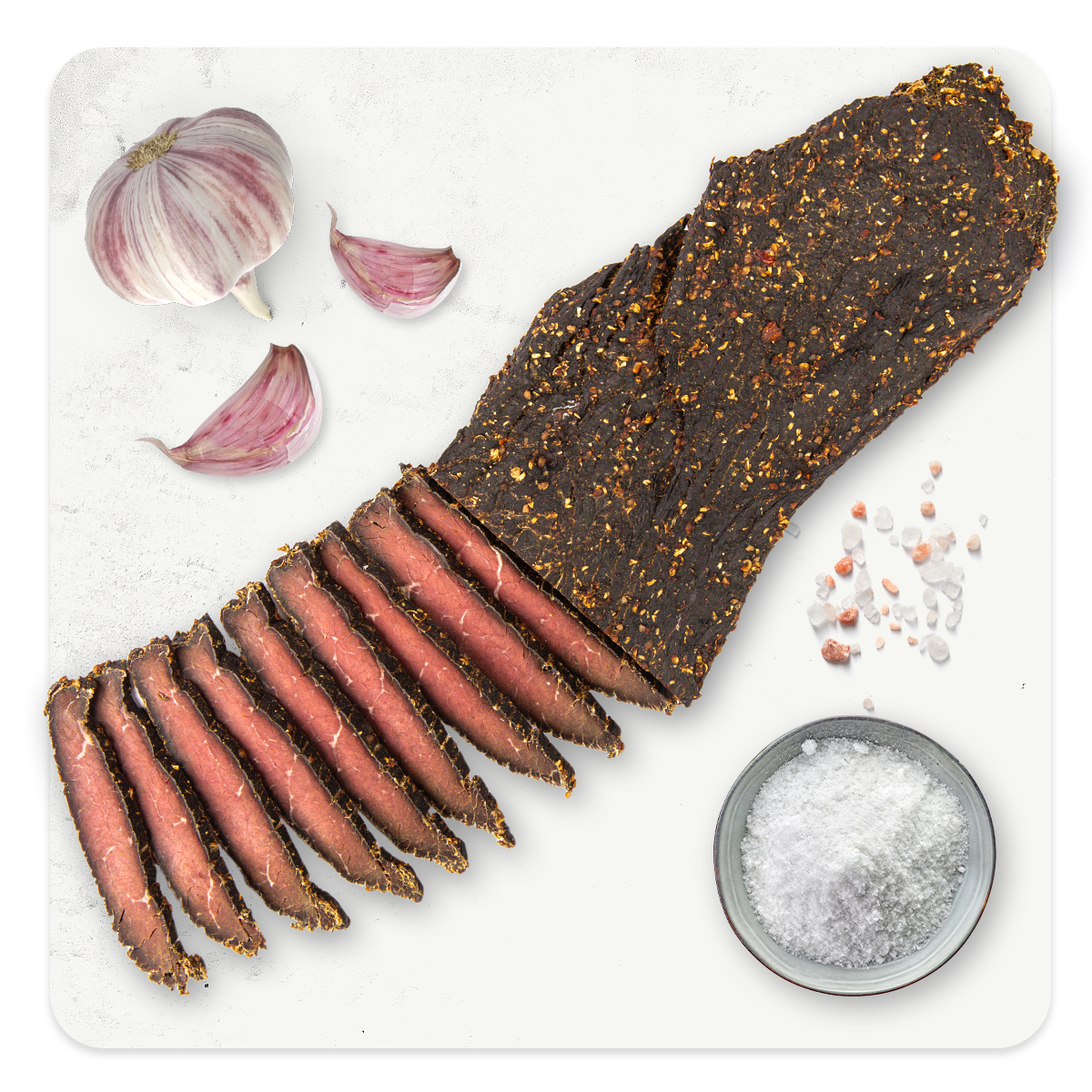Biltong and jerky are somewhat synonymous terms among many consumers who are unaware of the difference between the two. But rest assured, there is indeed a significant difference between these two delicious, protein rich snacks. Jerky originated in the United States, and is made by applying hot air to thinly sliced and marinated strips of meat. Biltong, on the other hand, originated in South Africa, and dates back hundreds of years to when communities developed this unique method for preserving meat.
To read more about the origins of biltong, check out our previous blog here.
What is Biltong?
Biltong, like jerky, is a style of air-dried meat. It is made by curing large pieces of meat in vinegar and a spice mix, and then hanging it out to dry for several days. Once dried, it is then cut into pieces, resulting in a softer meat snack than what one might expect from jerky. While a smoker or dehydrator is required to make beef jerky, biltong instead dries naturally in the open air over a longer period of time. The curing process helps preserve the meat so that it does not become contaminated during the drying process.
Beef is probably the most common meat for biltong, however, more gamey meats such as venison and ostrich are sometimes used. Here at The Jerky Co, we have even created a delicious lamb biltong, seasoned with mint and rosemary.

Biltong vs Jerky
The result of this process is a different snack to jerky. Because the meat is sliced after drying, there is less of a reliance on added flavours. Jerky, on the other hand, often relies on the thin strips of sliced meat being completely marinaded to create the desired product. This means that biltong tends to have a more natural meat flavour, rather than focussing on the added flavours that are used to make jerky.
Is Biltong a Good Source of Protein?
One of the many reasons biltong is such a great snack is that it is an excellent source of protein. Protein makes up between 41 and 50 grams per 100g of biltong across our range. This makes it a rich source of protein which is essential for muscle growth. Many people rely on protein bars or protein powder to rebuild their muscles after exercise, when in fact biltong is a richer and more natural daily protein source.
Other Nutritional Benefits
While beef jerky is indeed a very healthy snack, biltong has the additional nutritional value of going through a more natural flavouring process. This means it is generally lower in salt than jerky because the marinade doesn't reach every strand of muscle fibre like it does when the meat is sliced before it is dried.
It's rich in vitamin B12 which is a nutrient that helps keep your body's blood and nerve cells healthy.
It is also a great source of iron, which is essential for your body’s growth and development. Iron is an incredibly important dietary mineral as it is involved in various bodily functions, most importantly the transport of oxygen in the blood. Without enough iron, one can feel fatigued.
Eating iron rich food sources such as biltong and jerky helps to maintain healthy blood cells for overall good health.
Therefore, biltong is not just renowned for its high protein content, it is a rich source of many of the most important nutrients that keep the body healthy.

Not Just a Snack
While it's most common to simply enjoy biltong straight out of the packet, there are other ways to enjoy this particular cured meat. Due to its softness compared with jerky, biltong can be used as a component in many dishes.
Biltong slices can be added to salads to help make them more satisfying and to boost the protein content. Alternatively, it can make a great topping for a jacket potato along with sour cream and chives. There are so many ways biltong can be used in your cooking to serve up delicious and unique dishes. Check out some of the ideas below:
- Add some biltong slices to your roast veggies
- Add it to your scrambled eggs or omelette for brekky
- Use biltong instead of pepperoni on your pizza
- Combine it with nuts and dried fruit for a delicious trail mix
- Add it to your favourite cheesy pasta dishes such as mac 'n cheese
- Put some biltong in a quiche
- Or just chuck some slices in a sanga!
There are so many ways to get creative with biltong and make it much more than just a high-protein snack.
The next time somebody asks: is biltong good for you? You can tell them that not only is it good for you, but it is also good for your culinary repertoire. Have a look through our biltong range to place an order today. The hard part will be deciding which flavour to choose!

